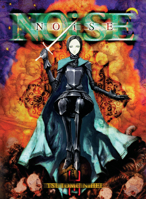Too lazy to Work, Too Nervous to Steal
No Synopsis Available.
Format:Paperback
ISBN:B002FMOTJY
Release Date:January 1984
Publisher:EmCOM
Weight:1.02 lbs.
Customer Reviews
5 customer ratings | 4 reviews
There are currently no reviews. Be the first to review this work.



















![ブラム! [Buramu!] 8](https://i.thriftbooks.com/api/imagehandler/s/F03D1A860B4B1FFD75893157EC8BD239F9E50F9A.jpeg)













